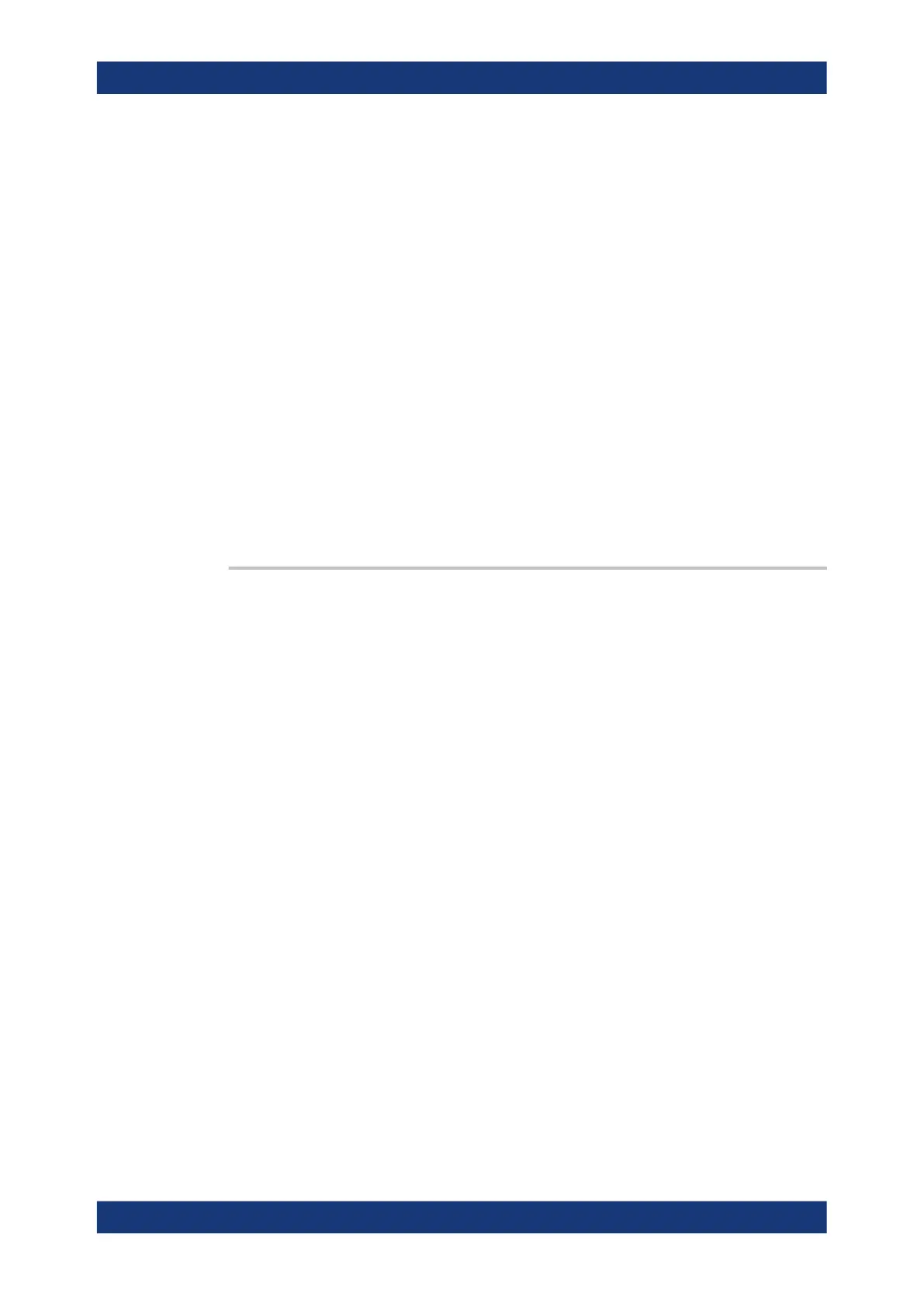Command reference
R&S
®
ZNB/ZNBT
1467User Manual 1173.9163.02 ─ 62
Note: Use CALCulate<Chn>:LIMit:STATe to switch on or off the entire limit check,
including upper and lower limit lines.
Suffix:
<Chn>
.
Channel number used to identify the active trace.
Parameters:
<Boolean> ON | OFF - switch limit check on or off.
*RST: OFF
Example:
CALC:LIM:LOW -10, 0, 0, -10
Define two limit line segments covering the entire sweep range.
Two upper limit line segments with default response values are
created in addition.
CALC:LIM:UPP 0, 5, 5, 0
Change the response values of the upper limit line segments.
CALC:LIM:LOW:STAT ON; :CALC:LIM:UPP:STAT ON; :
CALC:LIM:FAIL?
Switch the limit check on and query the result.
Manual operation: See "Limit Check" on page 375
CALCulate<Ch>:PARameter:DEFine <TraceName>, <Result>[, <TestPortNum>]
Creates a trace and assigns a channel number, a name and a measurement parame-
ter to it. The trace is not displayed. To display a trace defined via
CALCulate<Ch>:PARameter:DEFine, a window must be created (DISPlay[:
WINDow<Wnd>][:STATe] ON) and the trace must be assigned to this window
(DISPlay[:WINDow<Wnd>]:TRACe<WndTr>:FEED); see example below.
Traces must be selected to become active traces; see CALCulate<Ch>:PARameter:
SELect.
Note: The parameter names in this command differ from R&S ZNB/ZNBT conventions;
moreover the parameter list is not complete. The alternative command
CALCulate<Ch>:PARameter:SDEFine uses a complete parameter list with compat-
ible names.
Suffix:
<Ch>
.
Channel number. <Ch> may be used to reference a previously
defined channel. If <Ch> does not exist, it is generated with
default channel settings.
Setting parameters:
<TraceName> Trace name, e.g. 'Trc4'. See "Rules for trace names" in "Table
Area" on page 337.
R&S ZVR/ZVABT compatible commands

